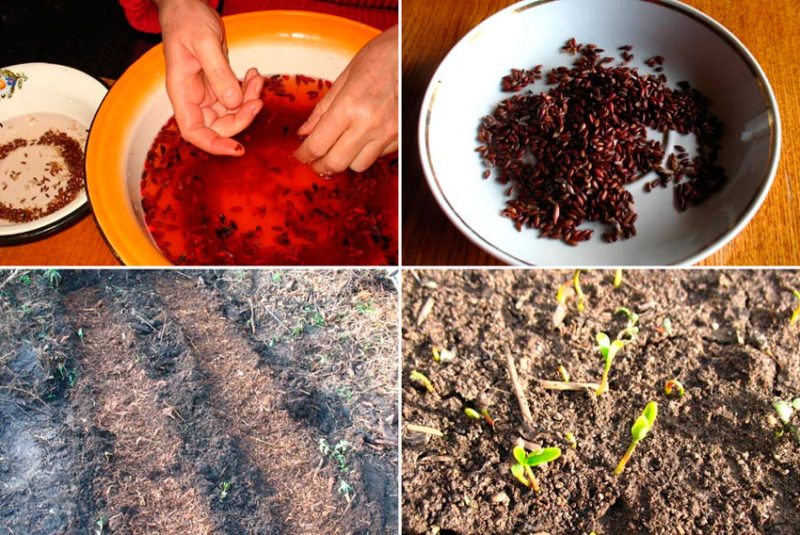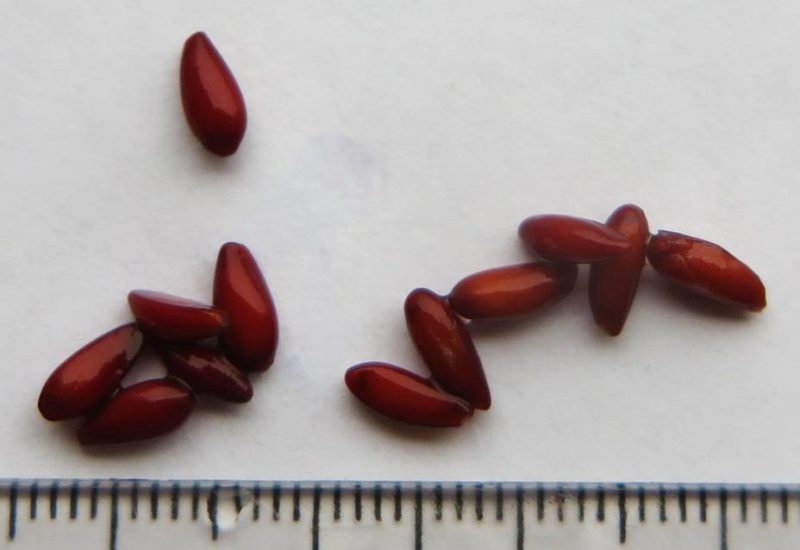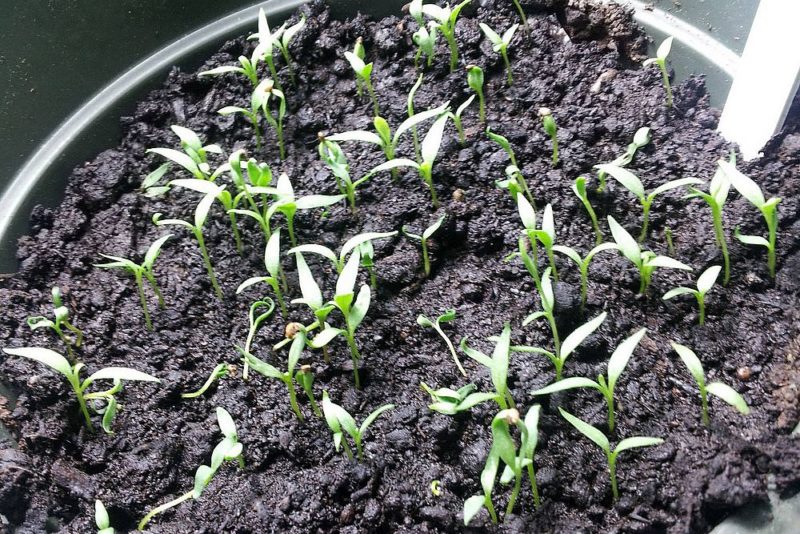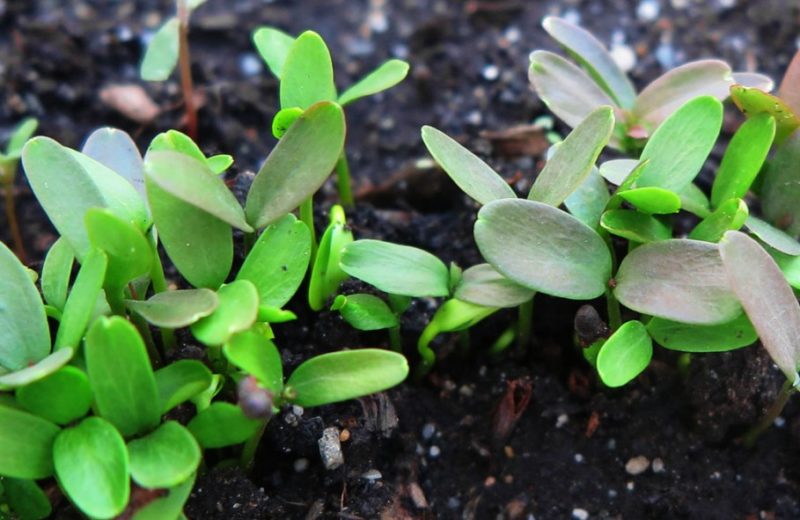How to grow barberry from seeds at home and in open ground
Growing barberry from seeds is a troublesome, but enjoyable task. Many gardeners are happy to collect seed material, carry out stratification before sowing and then proudly watch the fruits of their labor. In this article we will talk about how to grow a crop from seeds: collect and prepare material for sowing, how to choose suitable variety for planting on the site, care for barberry grown at home, as well as shrubs for planting in the garden.
Is it possible to grow barberry from seeds?
Seed growing method barberry practiced much less frequently compared to the method of cuttings and dividing the bush. This is due to the low germination rate of the seed and a large amount of preparatory work. And yet, if you correctly collect, prepare and sow the seeds, in 3-4 years a barberry bush will show off on your site.

Choosing a seed variety when purchasing
When choosing barberry seeds, take into account the local climate. Winter-hardy varieties are suitable for the northern regions: Green Carpet, Coronita, Superba, Pillar, Maria, Auricoma. In other regions, any variety of crop can be grown.
The most interesting are the Ottawa and Thunberg barberries. Ornamental shrubs reach 2.5 m in height, have a spreading crown and thorny branches.The color of the leaves varies depending on the variety: green, golden bronze, yellow, orange, red, burgundy, soft pink, coral.
To get a good harvest, it is recommended to plant seedless barberry. Its fruits are suitable for fresh consumption and making jam.
Columnar varieties are suitable for creating hedges. Vertical bushes do not require frequent pruning: Thunberga Pouvou, Electa, Rosie Rocket.
Spherical varieties are suitable for planting in rock gardens and creating hedges: Thunberga Admiration, Bananza Gold.
Miniature varieties are intended for growing at home: Bagatelle, Atropurpurea Nana, Kobold.
Reference. Despite their unpretentiousness, the bushes do not grow well in the shade, preferring sunny areas, or at least partial shade.
When to plant barberry seeds

Barberry seeds can be planted in spring and autumn. Spring sowing is carried out if there is no possibility for autumn work. The seeds are first stratified in the refrigerator. Sowing work is carried out in April, as soon as the soil warms up well.
With any sowing method, the seedlings will be dense, so they need to be thinned out. 40-50 cm are left between seedlings, and after 2 years they are planted in a permanent place.
Features of planting before winter
The following varieties of barberry are best suited for sowing in late autumn: Amur, Canadian, Korean, common, Siberian.
In early October, prepare the beds and sow fresh seeds thickly. More than 50% will not sprout. Winter planting has a great advantage: the seed material does not need to be stratified, winter will do everything for you, and in the spring seedlings will appear on the site.
Preparing for sowing
Sowing barberry is done in two ways. In the first case - in seedling pots with a 1:1 mixture of garden soil and river sand or in prepared soil on the site. In the second case, the grains are not separated from the pulp. The soil should be breathable, sowing depth 1 cm.
Semyan
The collection of barberry seeds for spring sowing is carried out in November - early December. The fruits are ground in a bowl, being careful not to damage the seeds. Then it is left in a warm place for 3-4 days for fermentation, after which the pulp is separated from the seeds by passing through a sieve. The seeds are washed in water and dried until they flow. The prepared material has a germination rate of 95%.
Reference. Freshly harvested seeds are sown in the fall in open ground without clearing the pulp. Soil germination is 50%.
For spring sowing, only seeds stratified for 3-4 months are suitable. They are disinfected in a solution of potassium permanganate, washed with water and dried. Then wet sand is poured into the tray, mixed with seeds and covered with a lid. The container is sent to the refrigerator until spring.
Conditions for seed germination:
- temperature up to +5°C;
- high humidity;
- air access.
An ideal environment helps soften the dense shell and saturate the seeds with nutrients for growth.
Timing for stratification of different varieties:
- Thunberg – 90 days;
- Amur - 105 days;
- ordinary – 60 days.
Ground
Loamy and sandy loam soils are suitable for sowing barberry seeds before winter. The area is first cleared of weeds and the soil is loosened. Seeds are sown to a depth of 3 cm and covered with mulch to protect them from rodents.
Stratified seeds are sown in pots filled with ready-made substrate from the store to understand which have been prepared and which have not. Sowing is also carried out in the intended peat tablets, 1 seed for each. With this method landings seedlings do not need to be picked.
Seeds sown in garden pots sprout after a pair of true leaves appear. The roots are pinched to stimulate root formation and better survival. The seedlings are kept in a new container for 1-2 years, then they are planted in open ground.
How to plant barberry seeds correctly

The place for winter sowing is prepared in advance: the ground is dug up, weeds are removed and fertilizers are applied. It is best to sow barberry on a hill, since the crop does not like excess moisture. The site should be sunny, protected from gusty winds.
Furrows 3 cm deep are made in the soil and seeds are sown. The area is covered with mulch. In spring, the cover is removed and covered with thick polyethylene. The seeds germinate slowly but amicably. Then the seedlings are thinned out and a gap of 5 cm is left between them. Transplantation to a new place is carried out after 2 years.
Spring sowing is carried out at the end of March - in April. The seeds are soaked in a growth stimulator for 24 hours. The pots are filled with a universal mixture for seedlings with an acidity of 5.8-6.5. You can also prepare the mixture yourself by mixing turf, sand and peat in proportions 1:1:1. The seeds are planted to a depth of 3 cm every 4 cm. The soil is generously spilled with water, and the excess is drained from the pan. The container is covered with polyethylene or glass and placed on a lighted windowsill. The first shoots will appear in early June.
When sown in a peat tablet, the seedling is buried in the garden along with it. When planting in a pot, the plant is carefully removed from the container and, together with a lump of earth, planted in a new place.
Features of growing barberry from seeds in open ground
The soil for planting barberry must be prepared in advance. Garden soil is mixed with sand and humus in equal proportions. If the soil is poor and too heavy, it is completely replaced with a fertile mixture. Sandy soil is fertilized with 3-4 buckets of low-lying peat and organic fertilizers: manure, compost, humus (10-15 kg each). Clay soil is fertilized with peat - 1-2 buckets, rotted cow manure - 10 kg, and also loosened with coarse sand - 20-40 kg. The proportions are based on 1 planting hole measuring 50x50 cm.
When planting in winter, seedlings will appear in June–July. Caring for them is simple: you need to regularly weed and water. In summer, the soil is fertilized with a solution of humic acids. In the first year, weak seedlings are mulched with spruce branches, and strong ones are moved to a garden bed for planting.
At home
Growing barberry from seeds at home does not require much effort. For this, dwarf varieties are used that do not take up much space.
Watering is carried out all year round, reducing the frequency in winter. During the heating season, the leaves are sprayed with clean water once a week.
It is important to regulate the length of daylight and, if necessary, supplement the plant with a phytolamp.
In summer, the bush is taken out to the sunniest balcony so that the leaves acquire a more saturated color.
Care after landing

In the first year after planting, the soil is not fertilized. In the second year, in the spring, mineral fertilizers are applied: “Fertika”, “Fertilizer for ornamental shrubs”, “Clean leaf for ornamental shrubs and trees”. To increase green mass, nitrogen-containing fertilizers are added, but in July they are completely stopped. To obtain a rich harvest, it is recommended to increase the proportion of phosphates and potassium.
When watering, the rule is: the less, the better. Excess moisture is detrimental to the roots, but the crop copes well with drought. Adult bushes are watered once a week; if the summer is rainy, you don’t have to water them. Young seedlings require more moisture. Water at room temperature is poured into the roots, being careful not to get on the leaves.
After watering, weeding and loosening of the tree trunk circle is performed. To retain moisture, the soil is mulched.
Formative pruning of barberry is carried out in the spring in the first 2-3 years of the plant’s life. A rejuvenating haircut is carried out once every 10 years at the end of autumn. To do this, old shoots are removed, which helps stimulate the growth of new branches. Sanitary pruning is performed in the spring and during the season if necessary. All old, frozen, diseased and damaged branches are removed.
Only young seedlings in all regions are covered for the winter. In the northern regions, bushes must be covered with spruce branches, since even the most winter-hardy varieties sometimes cannot withstand severe frosts. The shoots are tied with twine, wrapped in burlap, and the voids are filled with spruce branches.
Barberry has a strong immune system and rarely gets sick. The best way to protect against insects, fungal and viral infections is a preventive inspection of the bushes.
Useful tips on the topic
Advice from experienced gardeners will help you grow barberry on your plot without any problems:
- Large varieties are planted at a distance of 1.5-2 m, otherwise the branches will interfere with each other.
- In cold regions, shrubs must be protected from severe frosts. Spruce branches or spunbond are suitable for covering.
- After flowering, the buds do not need to be removed. It is better to cut the flowers by hand if the seeds are not needed. This will improve the decorative appearance of the plant and direct nutritional components to the woody shoots.
- When planting barberry in a permanent place, make sure that the neck remains above ground level.
- Seeds received before March are placed on wet stratification in the refrigerator, and then sown in boxes in February - March. Seeds obtained in March are placed in the refrigerator for a month, and before sowing, they are soaked for 24 hours in water and sown directly into the ground in early May.
- The culture does not have roots, so it gets along well with many plants. This makes it popular among landscape designers.
- To regulate acidity, slaked lime is added to the soil - 400 g per 1 m².
- Dwarf varieties do not need to be pruned; they have a compact crown and look great in alpine hills and border plantings.
- Seedlings with a closed root system are planted at any time of the year, except winter, while those with an open root system are planted in spring or autumn.
Conclusion
There is no need to prepare seeds for winter sowing. It is enough to collect ripe fruits and sow them under the mother bush. Seeds for spring sowing must undergo a mandatory stratification procedure, which will saturate the material with air and nutritional components, and also soften the hard shell. With this method of preparation, the percentage of germination reaches 95 versus 50 when sowing without stratification.
Barberry can be grown in the garden, as well as at home. Caring for the crop is not difficult; it is enough to provide moderate watering, apply fertilizing on time, monitor the length of daylight hours for indoor plants, and also weed and loosen the soil when growing in the garden.